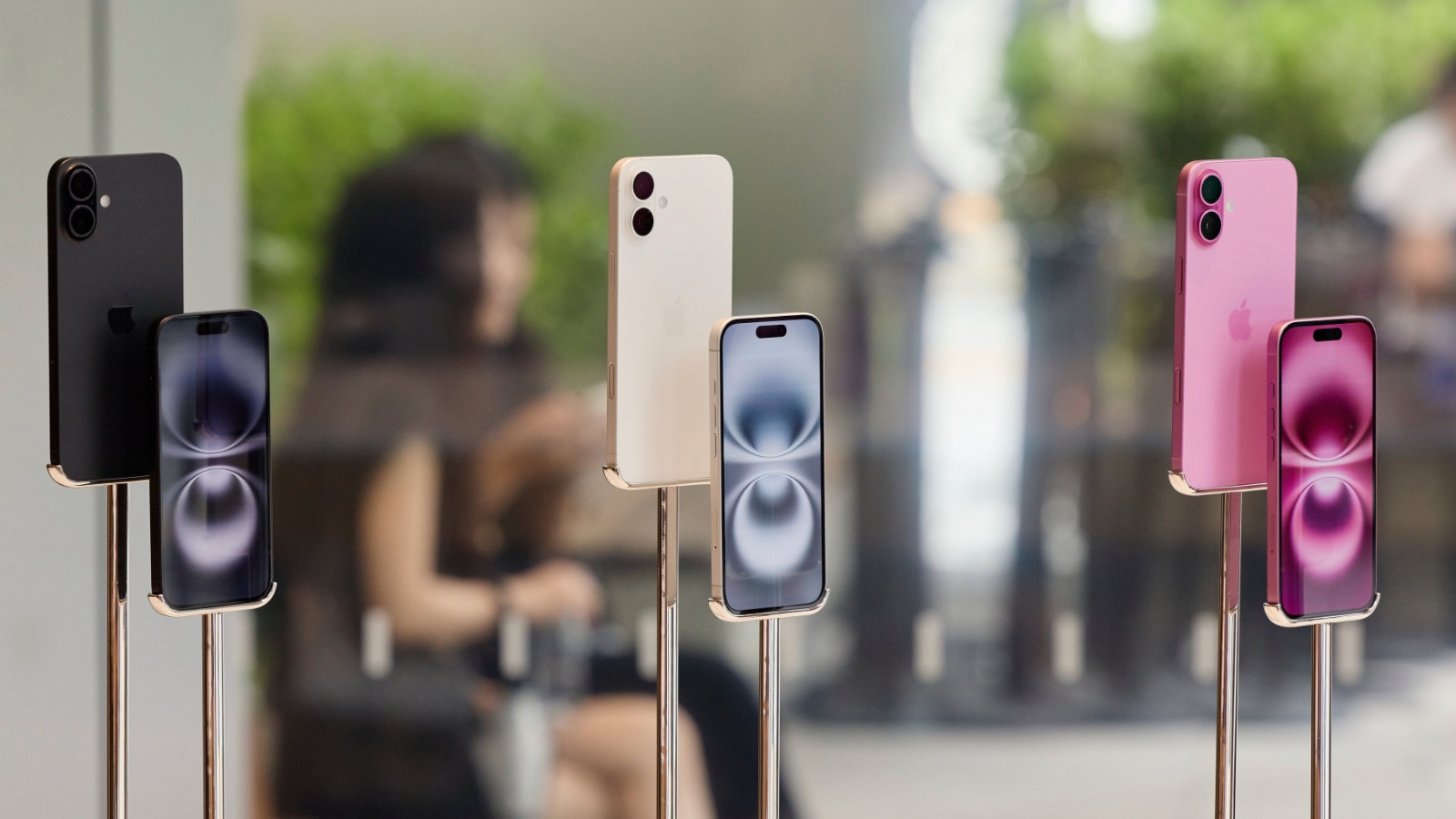The Unknown Tech Behind a New Generation of Edge AI Devices
You may not have heard of piezoMEMS — but novel applications of this tiny, game-changing technology are poised to reshape the future of AI at the edge. In 2023, researchers estimated that using generative artificial intelligence (genAI) to create an image used as much energy as charging a smartphone. Now, imagine generating AI images with […] The post The Unknown Tech Behind a New Generation of Edge AI Devices appeared first on Unite.AI.


You may not have heard of piezoMEMS — but novel applications of this tiny, game-changing technology are poised to reshape the future of AI at the edge.
In 2023, researchers estimated that using generative artificial intelligence (genAI) to create an image used as much energy as charging a smartphone. Now, imagine generating AI images with your smartphone.
As AI shifts to edge devices like smartphones and AR glasses, the most compelling and widespread applications will likely revolve around real-time, personalized, and context-aware experiences. These devices are always with us, so the AI can leverage their sensors – cameras, microphones, GPS, accelerometers – to deliver seamless, low-latency solutions and experiences.
Think of AI as an omnipresent sidekick providing real-time contextual assistance. On smartphones, this could mean instant language translation during conversations or travel, like pointing your camera at a sign and getting an overlay in your native tongue. For AR glasses, it’s even stickier – imagine walking through a city and having historical facts, restaurant reviews, or navigation cues projected into your view, all tailored to your interests and without needing to pull out a device. Since edge AI processes data locally, it’s a win for trust and data privacy.
While the promise for edge AI is obvious and compelling, hardware challenges remain.
- Challenge 1 – Thermal: Just like AI data centers, edge AI devices are thermal-limited, not MIPS/compute-limited. Smartphones are already at their thermal limits; edge AI features simply compound the problem. Same for AR glasses, as more compute, optics, and micro displays are integrated.
- Challenge 2 – Size/Weight/Form Factor: This is an enormous challenge for AR glasses as manufacturers seek the holy grail of balancing all-day wear comfort (weight) with the necessary electronics and battery life (performance) all in a fashion-first, stylish form factor.
- Challenge 3 – Conversational AI Audio Quality: Voice will be a dominant interface, particularly with AR glasses, allowing quick, hands-free operation. However, conventional coil speakers are thick and bulky (see Challenge 2) and don’t perform to their maximum potential in tight, constrained spaces. Further, their relatively poor part-to-part consistency negatively impacts value-add DSP features such as privacy and conversation focus modes.
Still, the mad dash to perform genAI on edge devices – smartphones, AR glasses, and other mobile devices – is underway. Researchers at Deloitte estimate the share of genAI-enabled smartphones could exceed 30 percent of shipments by the end of this year. To say nothing of a new category of genAI-powered smart glasses.
In edge devices, part of the solution comes from reimagining the electronics that go into them.
PiezoMEMS Components Enable GenAI at the Edge
PiezoMEMS technology addresses the challenges of genAI in edge devices. Not only because of what it does, but how it’s made.
PiezoMEMS is an application of micro-electromechanical systems technology that uses piezoelectric materials to convert electrical energy into motion, essentially a voltage-controlled airflow source. PiezoMEMS components are manufactured in a reliable, stable and highly uniform semiconductor process, allowing the mass production of highly efficient, cost-effective microelectronics in small, 1-millimeter thin chip packages.
Active Cooling for Edge AI Thermal Management
Ultrasonic piezoMEMS silicon actuators now exist to pump completely silent, vibration-free pulses of air for the purpose of cooling thin, space-constrained electronics systems – basically a fan on a chip.
The implications for cooling edge AI edge devices are profound. The first piezoMEMS micro-cooling fan is 96 percent smaller and lighter than traditional fans – and is the only active thermal management device small and thin enough to fit inside smartphones and AR glasses, keeping surface and component temperatures 15-30% cooler while enabling compute to run at peak performance for extended periods.
PiezoMEMS Loudspeakers as the Conversational AI Interface
Size and Weight: piezoMEMS loudspeakers can produce equivalent or better loudness (sound pressure level [SPL]) as conventional coil speakers but at a fraction of the size, thickness, and weight. Applying this new speaker to AI-enabled glasses can get product designers closer to the holy grail balance referenced earlier in this article.
Here are two examples. First, at 1 millimeter thin, the piezoMEMS speaker is ~70% thinner than conventional coil speakers which allows the arms of the glasses to be thinner and more stylish.
Second, it has been suggested that the ideal weight of glasses is 30 grams to achieve all-day wear comfort. In AI glasses, conventional coil speakers typically weigh ~2 grams each. With one in each glasses arm (4 grams total), the speakers contribute ~15% of the total weight of the system. PiezoMEMS loudspeakers, at ~150 milligrams each, can remove >90% of the weight contributed by the speakers, bringing AR glasses closer to the 30-gram target.
Audio Clarity. Apart from its small size and weight, piezoMEMS loudspeakers enhance the audio experience. They not only generate sufficient volume in the open air, but they excel at reproducing the high frequencies typically associated with improved speech intelligibility and clarity. This is because piezoMEMS delivers a faster mechanical response than traditional speaker designs with almost no phase shift, which means the audio is clear, detailed, and accurate.
Improved DSP features. Finally, DSP-intensive features such as privacy modes and directed sound will perform better with piezoMEMS loudspeakers. Thanks to the uniformity and consistency of the semiconductor process, these speakers have near-ideal part-to-part loudness and phase matching, delivering a more predictable window for the DSP algorithm to operate. With less variability from the speaker, the DSP algorithms can enhance performance with less processing overhead.
Unlocking the Potential of Edge AI Devices
In the end, it’s going to take significant innovation to bring the power of generative AI to consumer edge devices. Not only must manufacturers overcome physics, but they must also ensure the best possible user experience – all without compromising on form factor.
New innovations in piezoMEMS technology open possibilities to remove thermal constraints, deliver improved speech intelligibility for conversational AI while enhancing the style (thin) and comfort (weight) in edge AI smartphones and AR glasses.
The genAI ecosystem is vast and interlinked. PiezoMEMS can be a key enabler.
The post The Unknown Tech Behind a New Generation of Edge AI Devices appeared first on Unite.AI.









































































































































































![[The AI Show Episode 146]: Rise of “AI-First” Companies, AI Job Disruption, GPT-4o Update Gets Rolled Back, How Big Consulting Firms Use AI, and Meta AI App](https://www.marketingaiinstitute.com/hubfs/ep%20146%20cover.png)




























































































































![Ditching a Microsoft Job to Enter Startup Hell with Lonewolf Engineer Sam Crombie [Podcast #171]](https://cdn.hashnode.com/res/hashnode/image/upload/v1746753508177/0cd57f66-fdb0-4972-b285-1443a7db39fc.png?#)





























































.jpg?width=1920&height=1920&fit=bounds&quality=70&format=jpg&auto=webp#)




















































-Nintendo-Switch-2-Hands-On-Preview-Mario-Kart-World-Impressions-&-More!-00-10-30.png?width=1920&height=1920&fit=bounds&quality=70&format=jpg&auto=webp#)












































































































-xl.jpg)





























![New iPad 11 (A16) On Sale for Just $277.78! [Lowest Price Ever]](https://www.iclarified.com/images/news/97273/97273/97273-640.jpg)

![Apple Foldable iPhone to Feature New Display Tech, 19% Thinner Panel [Rumor]](https://www.iclarified.com/images/news/97271/97271/97271-640.jpg)





































































![[Weekly funding roundup May 3-9] VC inflow into Indian startups touches new high](https://images.yourstory.com/cs/2/220356402d6d11e9aa979329348d4c3e/WeeklyFundingRoundupNewLogo1-1739546168054.jpg)





























